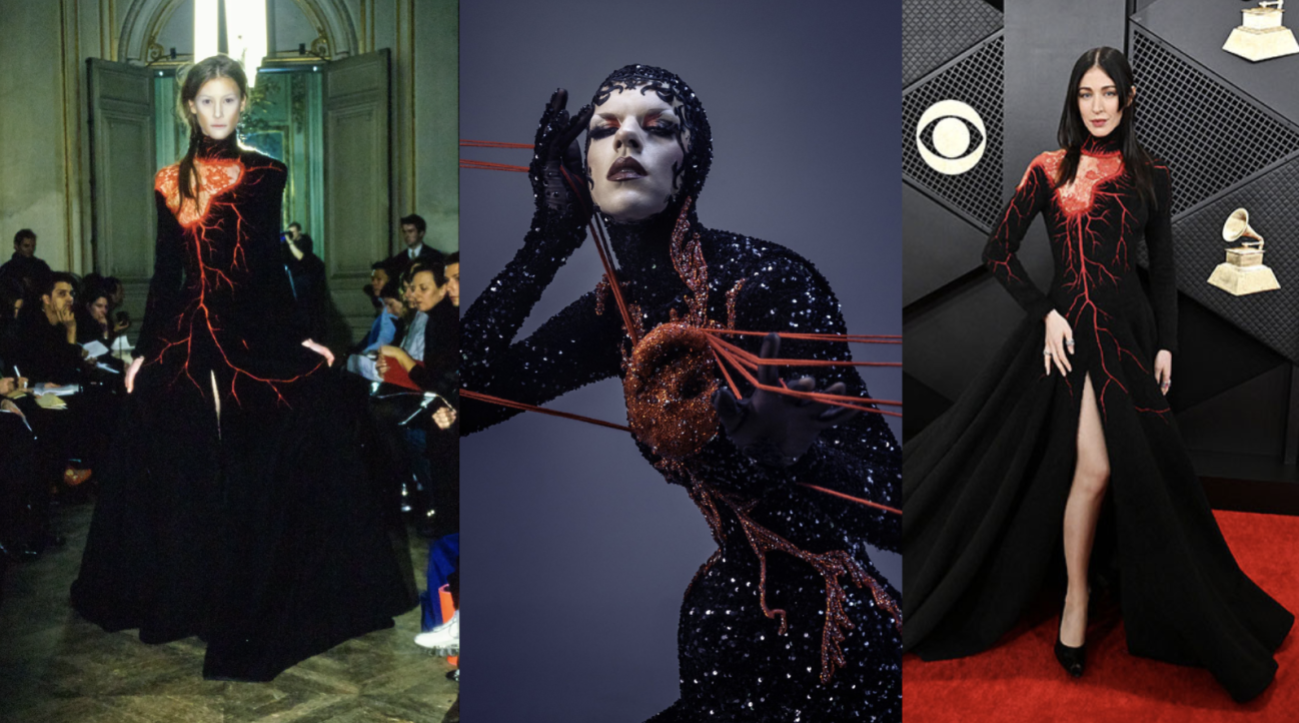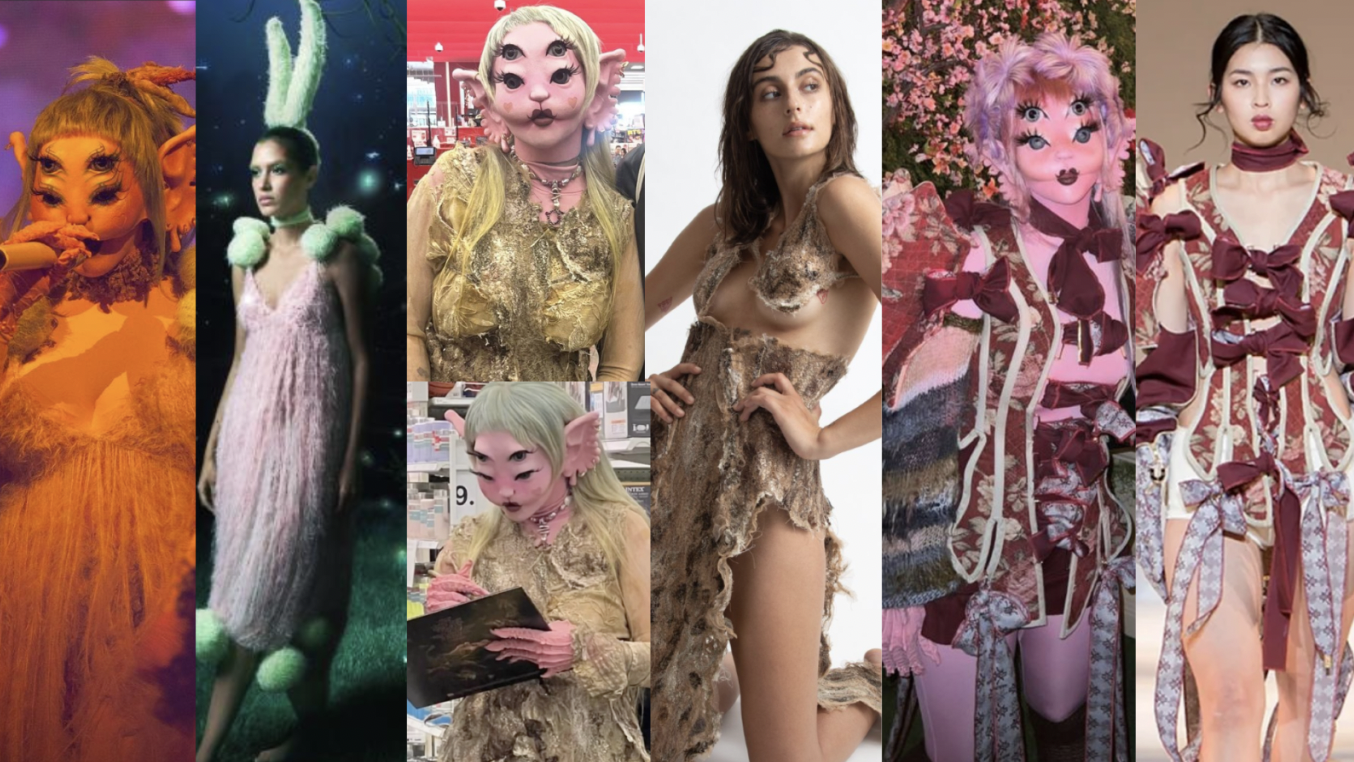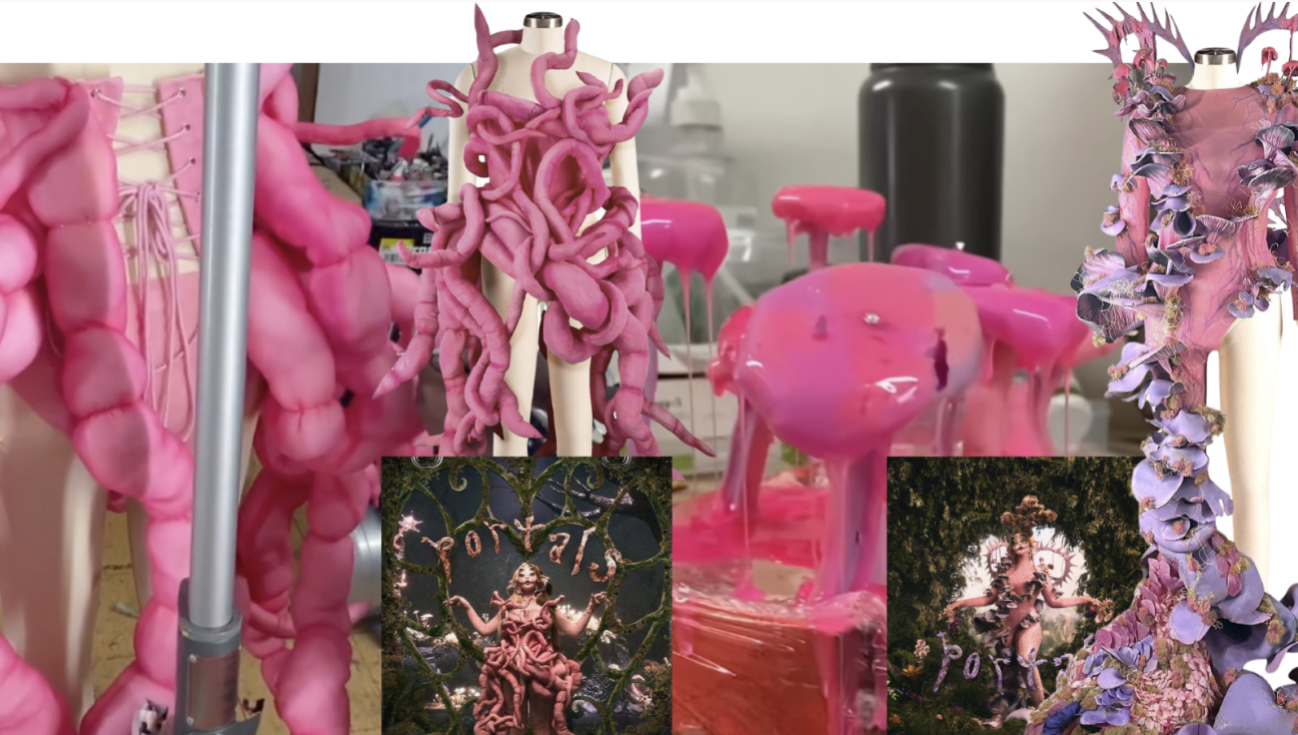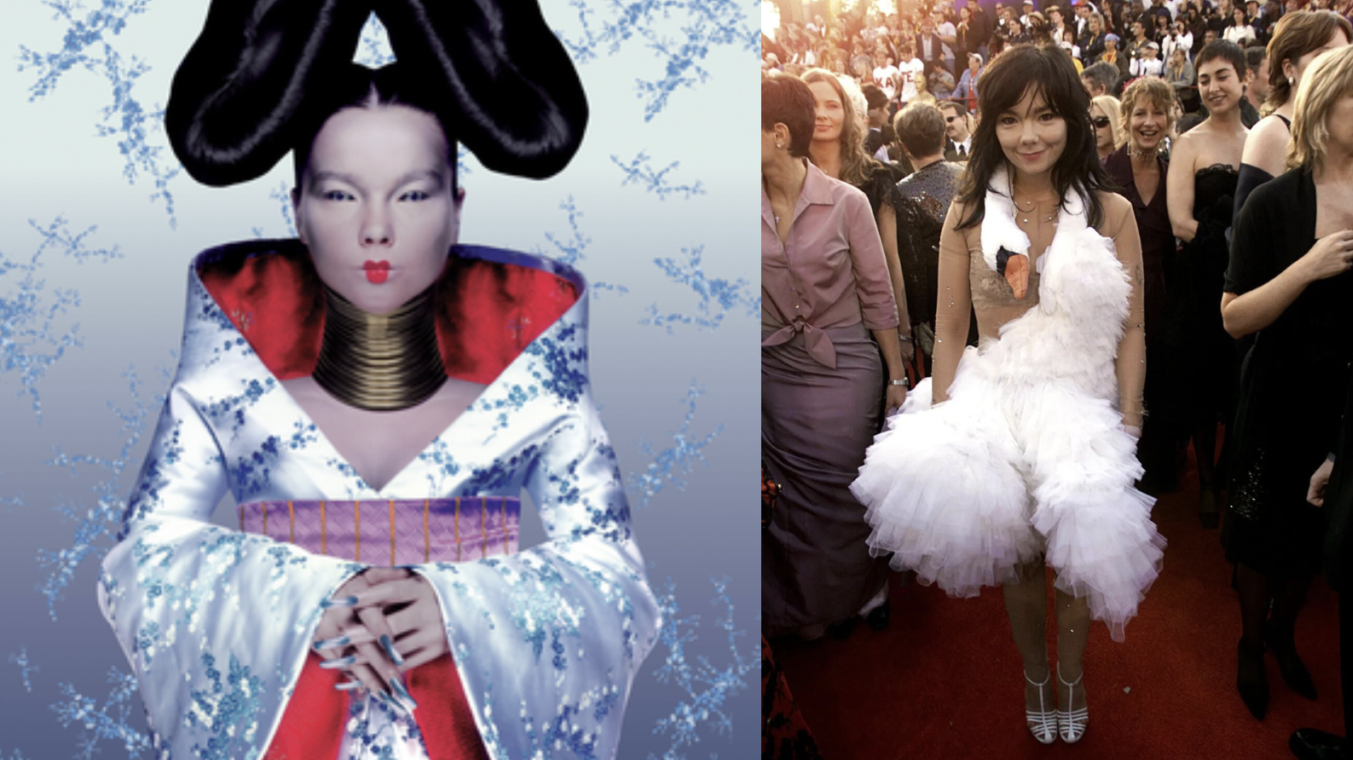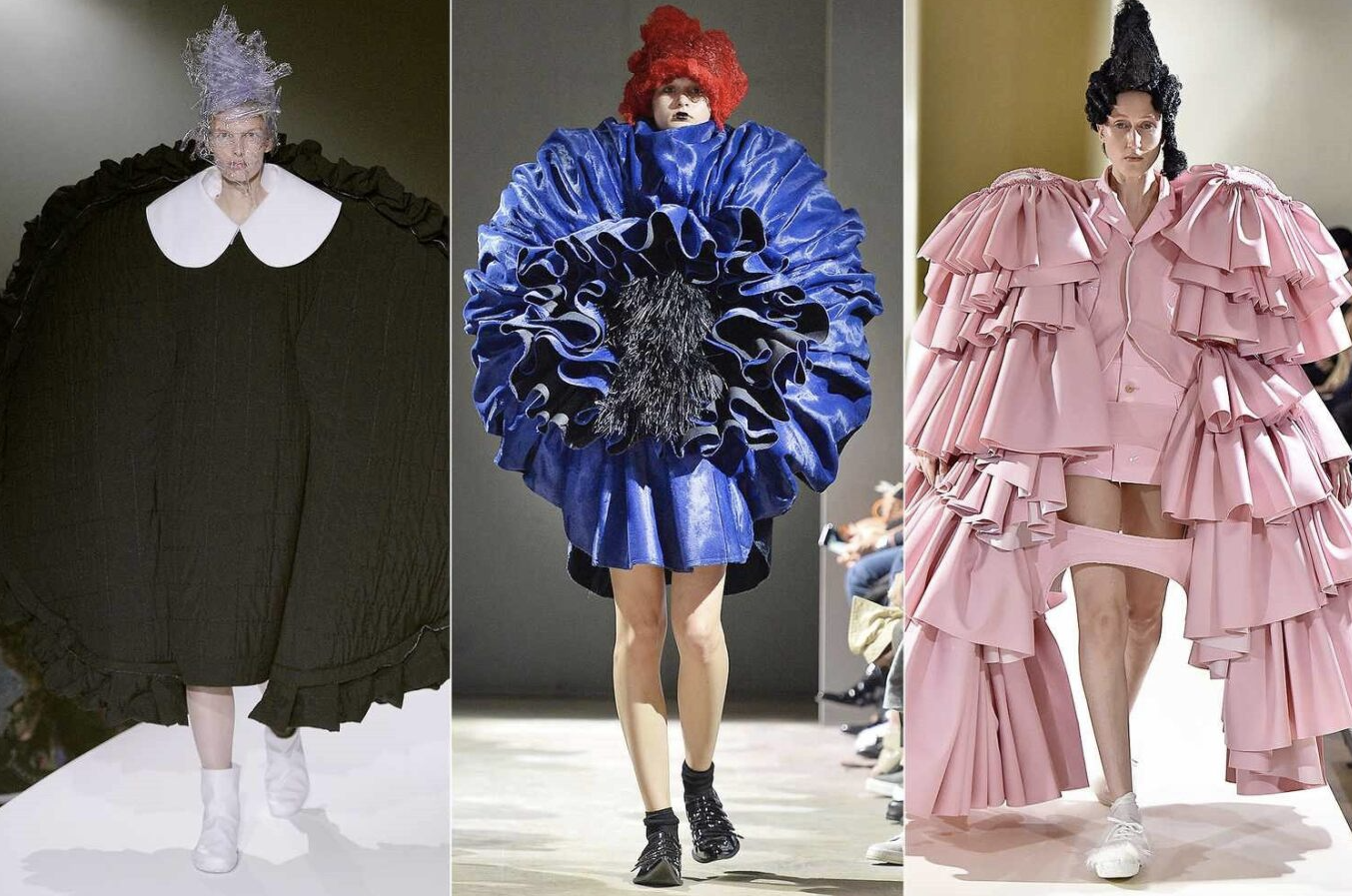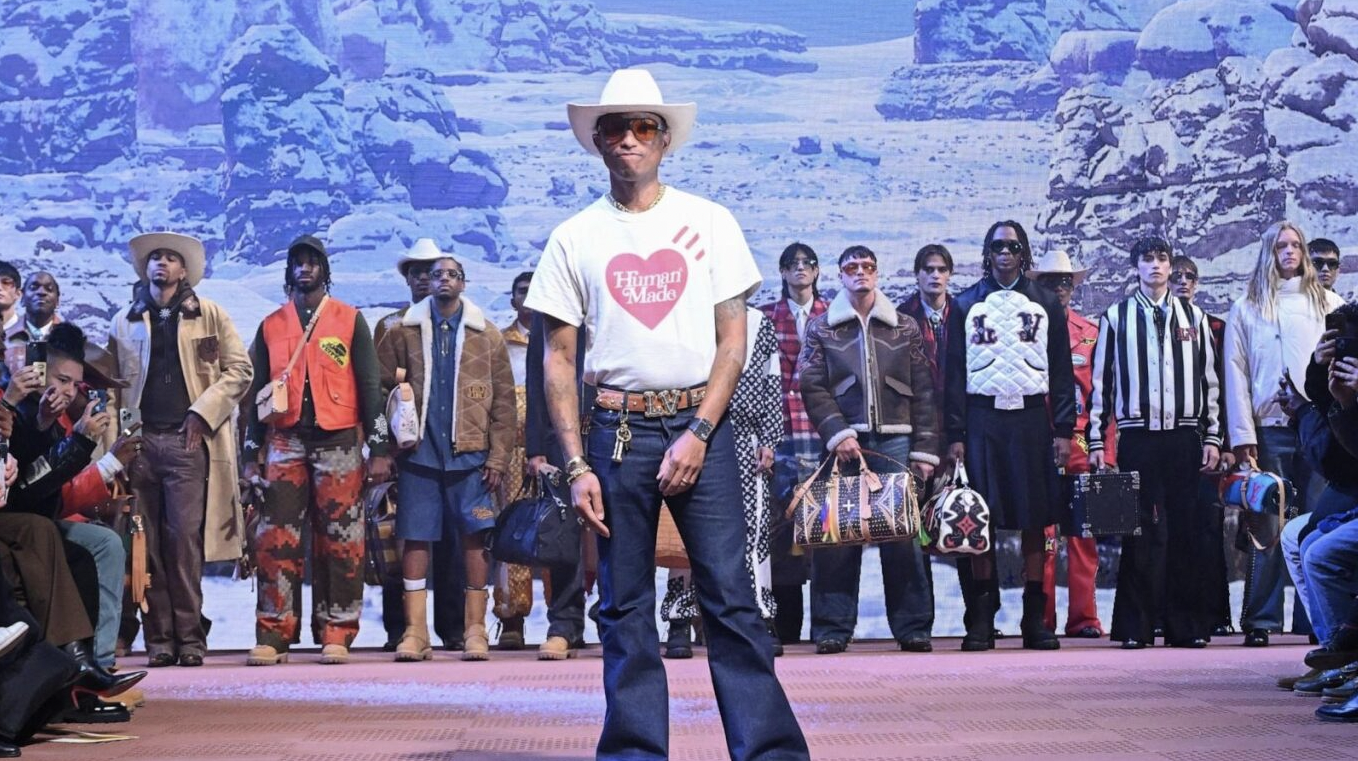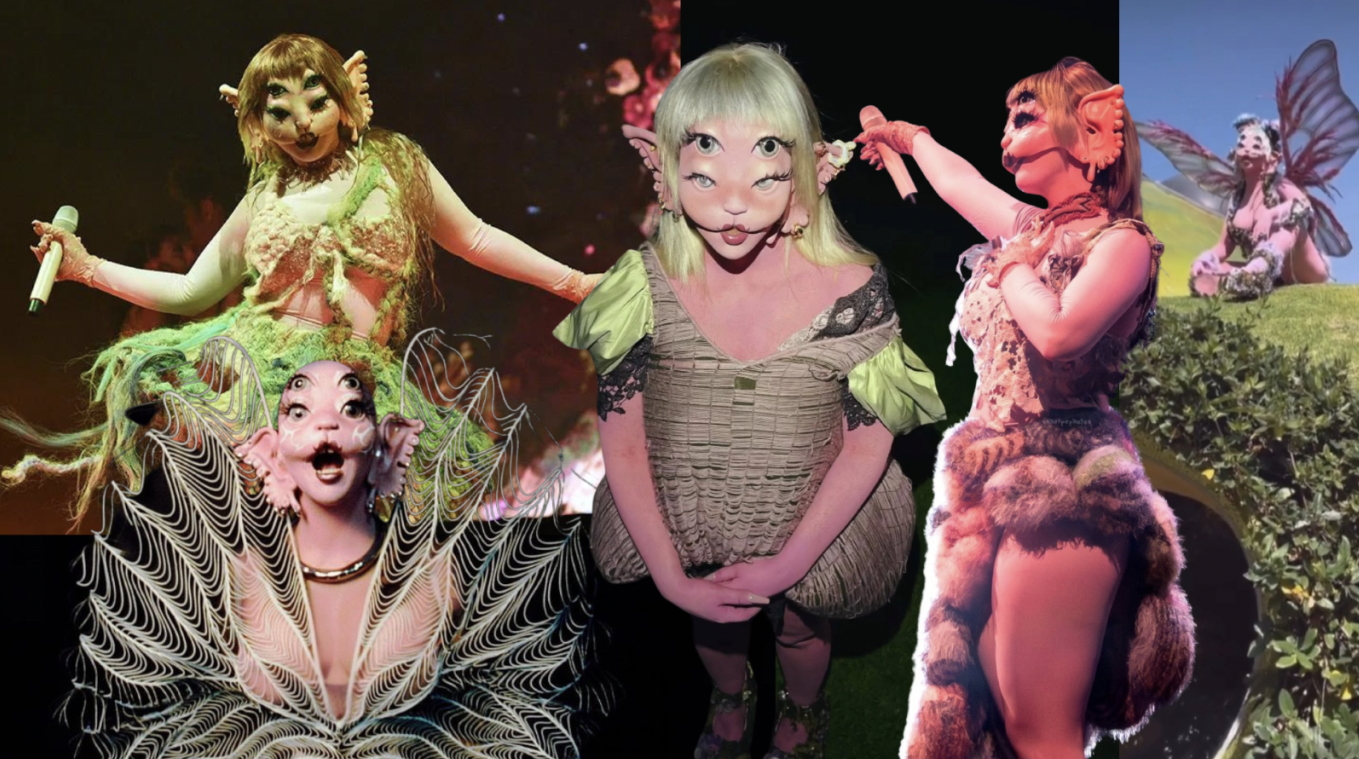The Portal Between Costume and Fashion
The smell of foam shavings waft throughout my work room and seep under my respirator. The low hum of my Dremel reverberates in the palm of my hand. With a keen eye, I carve the shapes from my mind into reality. My material of choice is EVA foam, a closed-cell ethylene-vinyl acetate copolymer foam used in products like bras, yoga mats, and even sneaker soles. This is foam-smithing, a technique that takes EVA foam and manipulates it through carving, heat, and priming, and it's my preferred method of creating fantasy props and armor.
The clanking of a sewing machine, the dizzying scent of glue, and the blurring of eyesight are senses that creatives are all too familiar with. From drag queens to couturières, the art of crafting clothing requires skill, dedication, and technique across all denominations. Yet the Broadway and runway stages are worlds apart, separated by the difference between “Costume” and “Fashion.”
I’ve always been a costume enthusiast and a self-proclaimed fashion aficionado. Nevertheless, the separation between my cosplays for Comic Con and my original fashion designs has always been divided by a clear line in the sand. “Fashion,” to most of us, means “brand,” while “costume” is usually associated with “character.” I never questioned it. However, as our “Metamodernist” society develops, the labels surrounding gender, artistic expression, and even our occupations are becoming more and more skewed. Is something less “Fashionable” and more “Costume-y” unless a celebrity wears it or a brand manufactures it?
Olivier Theyskens Fall 1998 RTW (Left), Utica Queen’s Finale Look Ru-Paul’s Drag Race 2021 (Middle), Caroline Polachek at the 2024 Grammys wearing Olivier Theyskens Fall 98 (Right)
My perspective was challenged when Melanie Martinez, a musical artist with multiple established platinum records and singles, rebranded their entire persona to transcend the human form. As promotion for their latest album, “PORTALS,” Melanie released several animations depicting a four-eyed pink swamp creature emerging from an egg, with several snippets of tracks from the album being released in tandem with editorial photoshoots of Melanie’s new fantastical look. Fans began to piece together the narrative of the Portals album and realized that this character represented Melanie themselves. The first track's titular line on PORTALS is: “I’m back from the dead, back from the dead.” This look is not just an avant-garde promotion but a spiritual rebirth.
Celebrities modeling intense SFX transformations for promotion and brand identity are relatively common. Doja Cat donned gray skin to transform into a devilish imp for her single “Demons,” while Heidi Klum’s famous Halloween party will always involve some liquid latex shenanigans.
But the truth was cemented when Melanie performed at Lollapalooza 2023 in Argentina with a silicone face prosthetic, webbed hands, butterfly-shaped ears, and their now-signature pink skin. More than just a promotional look, the creature costume would be an ongoing set piece for the PORTALS era.
Heidi Klum dressed as a “Rain Worm” at her 2022 Halloween Party (Left), Doja Cat in a promotional look for her 2023 single “Demons” (Middle), Melanie Martinez at Lollapalooza Argentina 2023 (Right)
But unlike their celebrity counterparts, Melanie wears the PORTALS costume to every public appearance, live concert, meet and greet, and even trips to Target. No matter where they are, you will never intentionally see Melanie Martinez’s actual face. Any and every outing will entail Melanie suiting up in head-to-toe silicon fantasy. Their commitment to the swamp creature look is a reality-bending fantasy that carves out a new performance art era for the Melanie Martinez Brand. The old Mel is gone, and the creature is here to stay.
Melanie meeting a fan at the PORTALS live listening event 2023 (Left), Screenshot from Melanie’s Instagram story celebrating the Vinyl release of PORTALS in Target in West Hollywood 2023 (Middle), Melanie at the step and repeat for Sirius XM LIVE 2023 (Right)
Despite the perpetual swamp monster realness, Melanie does not give up the key celebrity institution of wearing relevant designer clothing. You can often find Melanie wearing a myriad of Haute Couture and RTW designers from varying levels of exclusivity and popularity.
Melanie in Lorena Pipenco SS24 Capsule (Left), Melanie in Ren Haixi SS22 (Middle), Melanie in Maimi Sadai SS18 Capsule (Right)
Lorena Pipenco, a British-Romanian designer, highlights her Romanian culture through fuzzy knits, skewed proportions, and tasteful cutouts. Bold colors and furry hybrid knits tell Pipenco’s story of seeing the glass half full in a world that didn't fully accept her or her Romani culture. On Melanie’s creature character, Pipenco’s designs help them appear like pollinated bulbs of moss, organically germinating across their body. Lorena Pipenco is highlighted in Vogue‘s “The Kitsch Issue” and Fashionista’s “How to Shop for a Sagittarius.”
Ren Haixi designs with zero waste at the forefront of her design ideology. Creating organically draping garments out of fabric scraps,re-spun yarns and recycled swatches, Haixi’s pieces look like they melted onto the wearer. On Melanie, Haixi’s pieces depict the leaves and bark torn from trees as the creature runs amuck through the forest. Firmly believing in made-to-measure garments, Kendall and Kylie Jenner have worn Ren Haixi’s zero waste couture as a promotion for Kylie Cosmetics, Billie Eilish for her Fragrance No.2, and Megan Fox for Sports Illustrated.
Maimi Sadai is an independent Japanese designer with less than 10K followers on Instagram. Primarily focusing on custom-made pieces for her friends in the music industry, Sadai’s specialty is jacquard embellished fabrics and bows…and I mean LOTS of bows. Her hyper-feminine positioning creates an elevated Japanese Lolita style. Complete with Ted Baker's tailoring and the personality-filled patterns of Baby the Star Shines Bright, Maimi Sadai’s work has been featured on Michelle Wu at the Grammy Awards Museum and in Japanese Vogue. On Melanie, Maimi’s pieces are whimsical and abstracted homages to Melanie’s previous coquette-inspired character, Cry Baby.
However, more elaborate custom-made ensembles are also a fundamental part of the PORTALS era style and aesthetic. CHRISHABANA, a jewelry and costume designer who has created looks for Beyoncé’s Renaissance Tour, custom jewelry for Ice Spice, and suits of armor for Bella Hadid, was commissioned to create two looks for the PORTALS album cover. Swirling organic-looking tentacles, oozing melted mushrooms, and amorphic spiky wings all constructed using EVA foam…my favorite material to make cosplays.
Two PORTALS album cover looks designed by CHRISHABANA and process videos from the @chrishabana Instagram 2024
When I first saw the behind-the-scenes video of the making of Mel’s looks on the @chrishabana Instagram, there was a strange feeling in my chest. The kind of cognitive dissonance you get when you see your teacher at the grocery store, combined with the triumph of understanding a niche reference on cable television. This EVA foam material was never meant to be used in this “High Fashion” context as opposed to my experience of seeing it utilized deep within online forums or confined within the realms of Broadway productions, right? EVA foam has long been a staple of creative works from across the stage, runway, and even retail manufacturing. Moreover, how does Melanie Martinez’s dance between “Costume” and “Fashion” even have validity when high fashion brands use these same techniques and look just as outlandish on the runway?
Schiaparelli Couture 2023 with Kylie Jenner (Left) donning a Lion head made with foam base and Doja Cat (Middle) covered in Swarovski crystal SFX makeup.
Björk is another artist who barrels through this distinction. Her outfits range from zeitgeist-defining cultural history to pure spectacle, and she constantly morphs and manipulates her features to ascend to something almost alien. Designed by Alexander Mcqueen, Björk’s 1997 album cover, Homogenic, depicts her as a warrior princess with blacked android eyes, morphed facial features, an elongated neck, and giant space buns bigger than her head. Additionally, her iconic 2001 Oscars Swan dress was a massive disruption to the tight-necked black tie event standard for the event. Björk's identity will forever be intertwined with her fashion because her storytelling and performance art are intrinsically tied to her appearance.
Björk’s 1997 “Homogenic” (Left), The swan dress worn at The Oscars 2001 (Right)
Even Landmark designers like Rei Kawakubo and Theirry Mugler position themselves away from describing their Couture designs as exclusively “Fashion.” Rei Kawakubo, the founder of Comme des Garcon and Harvard's “Excellence in Design” award recipient, catalyzes the “Anti-Fashion” movement. Sending models down the runway in wide, baggy, oblique, and ballooning silhouettes, Kawakubo obstructs the typical rules of fit and design by using fashion as a medium rather than an order of operations. On the other hand, Mugler loved following the lines of the female body but embraced the fantastical theatrics of dress. His runway models were adorned in dragon scales, phoenix feathers, and gravity-defying clamshell bustles, with the grand finale being a futuristic chrome fembot. Mugler’s love for storytelling always dominated any need to uphold the conventions of high fashion.
“For more than forty years that I have been making clothes, I have never thought about fashion” - Rei Kawakubo.
“Fashion is a movie; every morning when you get dressed, you are directing yourself” - Thierry Mugler.
Before “Fashion” was even a widely adopted term, “Costume” was the typical way that you would describe your full garb. Derived from the Latin 'consuetudinem,' meaning habit or custom, “Costume” was also a way to describe the “Customary Dress” of different cultures and social classes. Later, it began to include garments in broader contexts like theater and visual arts in tandem with everyday fashion. The term only became differentiated during the 19th and 20th centuries when the “Fashion Phenomena” of the industrial age set in.
Yet it's common to hear a fashion critic or a passing netizen on Twitter/X proclaim that a designer's work is too “Costume-y”. For example, Pharrell Williams’ Western-inspired FW24 menswear collection for Louis Vuitton became the target of fire for that exact fashion sin after its debut. Aria Hughes from “Complex Magazine” writes:
“That costumey feel came through again in this latest collection, with Pharrell presenting very literal interpretations of the theme. The clothes are beautifully made with thoughtful and intricate details, but they lacked a distinct interpretation or point of view that we expect from fashion designers.”
Pharrell Williams as creative director for the FW24 Louis Vuitton show
However, several other fashion critics and influencers swooped in to defend Williams. Popular fashion journalist and TikTok creator @relaxitsonlyfashion says: “I think Pharrell brings a vibe that's playful but also naive. It's very juvenile but intentional. Like: ‘One day I'm a soldier, one day I’m a sailor, one day I’m a cowboy’. It's how kids play because, to kids, labor is charming and aspirational”. It's incredible how this creator alludes to costume through this description. Assimilating costume ideas into his collection, Pharrell’s “Costumey” display is instead likened to pulling the schemas and associations we have with workwear and exaggerating them to an idyllic degree.
Ultimately, a costume is defined as dressing up as something you are not. Usually, it is something unattainable, idyllic, fantastical, or a means used solely for expression. But how much of the fashion we wear and aspire to own is authentic to us, and how much of it is aspirational? Do we dress ourselves daily to reflect the person deep inside us or to represent how we want to see ourselves? Maybe even how we want the world to see us? Fashion is as much of a performance as costume is. It gets messy when we make sharp distinctions between them, or worse, weigh one as more significant as the other.
Melanie Martinez's commitment to the narrative of the PORTALS album through costume and special effects is exciting to see from a relatively mainstream artist. Of course, “Costume” and “Fashion” will always be separated at a utilitarian level. Yet, fashion is also defined by its intention to be commercial, just as costume is defined by its intention to entertain. But both are expressions of artistic merit that are deeply entwined nonetheless. Whether it's a campy swan dress or a hyperrealistic swamp monster, we owe equal respect to costume and fashion designers who give the clothes on our backs true meaning.
The whimsical fashion of the Melanie Martinez Portals era
My X-Acto knife curves with the lines of my pattern as it carves through the EVA foam. My hand is steady, but my mind is buzzing with focus. I’m not designing for a Comic Con cosplay or a collegiate fashion design class but for my original design editorial. Like Björk, Mugler, and Melanie, I identify as a craftsman by trade and a storyteller at heart. With the tools at my disposal, I forge the images in my mind into reality. Not to create a costume or fashionable garment but to create art.

